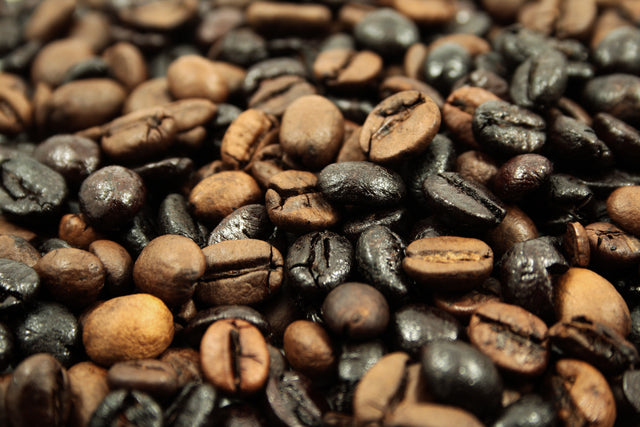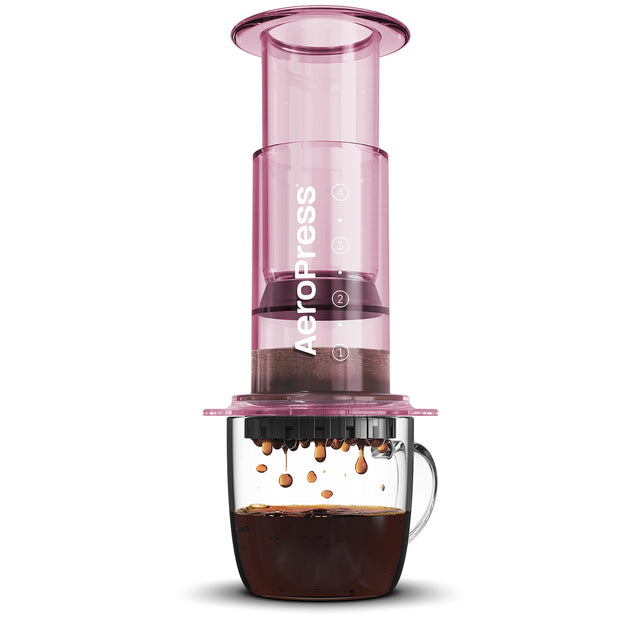Light Roast vs Dark Roast: What's the Difference?
Before coffee beans are roasted, they are pale green and fairly flavourless. To be transformed into the coffee beans we know and love, they must first be roasted. The roasting process plays a big part in the resulting flavour of the coffee brewed, with the intensity of the roast greatly impacting the brew. We take a look at the different roast types, and how these affect the flavour of coffee.

What is a Coffee Beans ‘Roast’?
When you buy coffee beans, the packaging will often describe the beans based on their location and roast type. Most commonly, this will be light, medium or dark roast. The roast of a coffee bean is named after the colour the bean becomes during the roasting process. The coffee beans are heated, and the longer they are heated, the darker they become. The colour changes due to the oils present in the beans being released as they get hotter.

Light Roast
Light roast coffee will have been heated until the beans reach an internal temperature of around 180 to 205 degrees Celsius. A coffee bean that has been heated to beyond 205 C cannot be considered a light roast coffee, as past this temperature, the beans expand and gain their first crack. As such, light roast beans are still very pale, with almost no oil on the surface.
The more you heat a coffee bean, the less caffeine it retains. Therefore, light roasts are ideal for those who need an extra caffeine boost, as they will have a far higher caffeine concentration than darker roasts.
As light roast coffee has only been slightly heated, they will have a toasted flavour with notes of acidity. Light roast coffee is the best for experiencing regional differences, as the unique qualities of the beans will be more noticeable. You’ll be able to distinguish whether you prefer coffee from Brazil or from Vietnam far more easily, as these subtle differences won’t be masked by the flavours produced by the oils released from darker roasts.

Medium Roast
To achieve a medium roast, coffee beans will be roasted until their internal temperature reaches 210 to 220 degrees Celsius. This leaves the beans with a first crack but stops their roasting before they gain a second crack. Medium roast has a much deeper brown colour than light roast; however, the beans will still be oil-free on the surface.
Because it has been roasted for longer, the medium roast will have less caffeine content than a light roast, but far more than a dark roast. Medium roast coffee offers more aroma than light roast, with a fuller flavour and a more balanced acidity.

Medium-Dark Roast
A medium-dark roast occurs when the beans are heated to 225 to 230 degrees Celsius. At this temperature, the beans will begin to develop a second crack, and oils will emerge on the surface of the bean. These oils contain much of the flavour of the coffee, so as these get released, the flavour becomes much bolder. The flavour may also develop, producing rich and spicy notes.

Dark Roast
Roasted to between 240 and 250 degrees Celsius, dark roast coffee is very dark in colour, almost looking burned. With more oil released as the beans get hotter, dark roast coffee beans will be shiny on the surface. In contrast with light roast coffee, a dark roast will no longer hold flavours from its origin, instead presenting a bitter and smoky taste.
Out of all coffee roasts, dark roast has the lowest amount of caffeine. Despite this, it is most commonly used for espresso!

Which type of roast do you prefer to use in your AeroPress UK?


0 Comments
There are no comments for this article. Be the first one to leave a message!